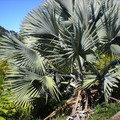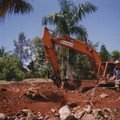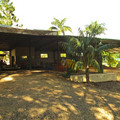Palms are beautiful plants that flower and produce gorgeous shades of yellow to green fronds. Australia is home to over fifty known species of palms, flourishing in its tropical and sub-tropical areas.
Despite the natural climate and environment that are perfect for their nurture and growth, palms aren't free from a number of diseases. Below are the types of diseases that Australian palms are particularly susceptible to and how to treat them.
Bud Rot
This type of disease attacks the heart fronds of palms. It is a type of fungus that infests the fronds thereby causing them to shrivel up and die. Watch out especially during summer, as this is the season when Bud Rot is most likely to occur. To treat this type of disease, chemicals may be applied to your palm given that the disease is still in its early stage. Consult a specialist and take care to follow instructions carefully. To avoid spreading fungi sterilize your gardening tools.
Fusarium Wilt
This is another type of palm disease that is caused by fungus. Once it attacks the palm, it causes the fronds to lose their green luster, wilting and killing them in the process. The Fusarium Wilt is a deadly disease and causes permanent damage to the plant. This means that once it has been infected, there is no known cure. The infected plant must be removed to prevent fungi spores spreading.
Ganoderma Rot
This palm disease has only been discovered recently. Having originated from Florida it has since spread to other parts of the world. As of date there are no known species of palm that are resistant to the Ganoderma Butt Rot. This disease is caused by the fungus Ganoderma Zonatum entering a palm through a wound in the butt area. From there it rapidly makes its way into the tree eventually rotting the wood.
Once the fungus has made its way into the centre of the plant, it forms a spongy, white mushroom like growth that is referred to as a "conk". This will form a horizontal disk on the bark of the palm.
There is no known treatment to this type of disease. Once you see the "conk" formed on the bark of the plant, it means the palm is as good as dead. It must be removed immediately from the area to avoid infecting other palms nearby. You can still use the wood above the butt area for mulching but be extremely careful when disposing the butt area. Make sure you wrap the infected wood in plastic before you take it to the incinerator or landfill. Remember to sterilize all your tools after working with the diseased plant. Wash your gloves and clothes well afterwards.
The best way to go about handling this disease is to prevent it from occurring on your plants. Be careful not to cause any wounds or cuts to the base of your palm. Handle your lawn mower and other shearing products and be careful not to nick the wood. If you suspect that a Ganoderma Butt Rot is developing in your area, consult your local forestry specialists for information and advice.
<< Previous Cold and Frost: Choosing the Right Palm | Back to Mullumbimby Palm Blog | Next >> Exotic, Small and Dangerous Palms



